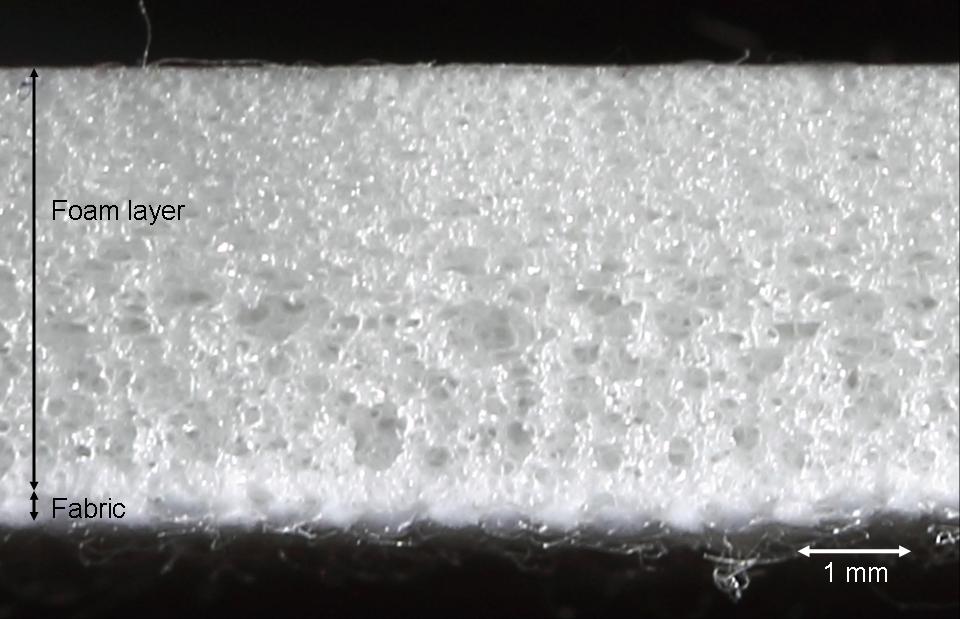Polyurethane foam which contains toxic isocyanates is found in many different places from your furniture, bedding, walls, under the carpet, and even in personal gear such as helmets and shoes. Because of its unique qualities, it can be found in many different places. However, is polyurethane foam with toxic isocyanates safe to be around?
According to the Environmental Protection Agency “The National Institute for Occupational Safety and Health (NIOSH ) has cited these potential health effects:
- Isocyanates have been reported to be a leading chemical cause of work-related asthma, a potentially life-threatening disease.
- Exposure to isocyanates can cause contact dermatitis, skin and respiratory tract irritation, sensitization, and asthma.
- Both skin and inhalation exposures can lead to respiratory responses.
- Isocyanates can cause “sensitization,” which means that some people may become allergic to isocyanates and could experience allergic reactions including: itching and watery eyes, skin rashes, asthma, and other breathing difficulties. Symptoms may also be delayed up to several hours after exposure.
- If you are allergic or become sensitized, even low concentrations of isocyanates can trigger a severe asthma attack or other lung effects, or a potentially fatal reaction. There is no recognized safe level of exposure to isocyanates for sensitized individuals.
Also, consider the following:
- Some workers who become sensitized to isocyanates are subject to severe asthma attacks if they are exposed again. Death from severe asthma in some sensitized persons has been reported. NIOSH issued an earlier Alert in 1996, “Preventing Asthma and Death from Diisocyanate Exposure.”
- Sensitization may result from either a single exposure to a relatively high concentration or repeated exposures to lower concentrations over time; this is an area where additional investigation and research is needed.may
- Even if you do not become sensitized to isocyanates, they may still irritate your skin and lungs, and many years of exposure may lead to permanent lung damage and respiratory problems.
- All skin contact should be avoided since contact with skin may lead to respiratory responses or cause other allergic reactions. Appropriate personal protective equipment (PPE) should be used during all activities that may present exposure to any isocyanate compounds to avoid sensitization.“
There may be other effects to polyurethane foam with isocyanates that might go unnoticed or get wrongly diagnosed by a physician. Polyurethane has different effects on different people, so being able to identify it as the source of a medical issue can be difficult unless it is tested for by the doctor.
If polyurethane foam with toxic isocyanates has proven to cause so many different medical conditions, diseases, and illnesses, then you may wonder why it is such a popular material. There are different answers as to why it is still so widespread, but arguably the main one is that in its solid form polyurethane foam only releases a relatively tiny amount of toxic substances into the air. This means that only long-term exposure that lasts for many years will have any noticeable effect.
However, there are exceptions to this general rule about the use of polyurethane foam and how it can affect those inside your residence.
Children
Infants, toddlers, and children are especially vulnerable to the long-term effects of polyurethane because their physiology is more susceptible to the substance. This is true of mattresses in cribs crafted from the foam that gives off a tiny amount of toxic particles which are breathed into the lungs and absorbed into the skin. While most of the symptoms are relatively minor such as headaches, coughing, and fatigue, there have been other, more serious issues such as difficulty breathing, allergic reactions, and reduced pulmonary functions that have been cited in some cases.
Fire
Another issue that may affect everyone is if the polyurethane foam catches on fire. When burning, it releases a large amount of toxic chemicals into the air which may cause harsh reactions when breathed into the lungs. However, it presents another danger in its flammability which in many cases accelerates the burning process which results in a total loss of the home. It’s one reason why some foam mattresses have additional chemicals added to reduce its flammable nature.
There have also been recorded effects on the brains of neonatal infants as well as many allergies that children experience. A real concern may be the physicians do not fully understand all the effects that polyurethane foam has on the human body.
